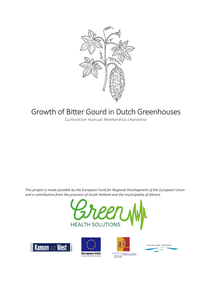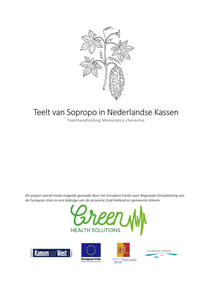Exercise is one of the external factors associated with impairment of intestinal integrity, possibly leading to increased permeability and altered absorption. Here, we aimed to examine to what extent endurance exercise in the glycogen‐depleted state can affect intestinal permeability toward small molecules and protein‐derived peptides in relation to markers of intestinal function. Eleven well‐trained male volunteers (27 ± 4 years) ingested 40 g of casein protein and a lactulose/rhamnose (L/R) solution after an overnight fast in resting conditions (control) and after completing a dual – glycogen depletion and endurance – exercise protocol (first protocol execution). The entire procedure was repeated 1 week later (second protocol execution). Intestinal permeability was measured as L/R ratio in 5 h urine and 1 h plasma. Five‐hour urine excretion of betacasomorphin‐7 (BCM7), postprandial plasma amino acid levels, plasma fatty acid binding protein 2 (FABP‐2), serum pre‐haptoglobin 2 (preHP2), plasma glucagon‐like peptide 2 (GLP2), serum calprotectin, and dipeptidylpeptidase‐4 (DPP4) activity were studied as markers for excretion, intestinal functioning and recovery, inflammation, and BCM7 breakdown activity, respectively. BCM7 levels in urine were increased following the dual exercise protocol, in the first as well as the second protocol execution, whereas 1 h‐plasma L/R ratio was increased only following the first exercise protocol execution. FABP2, preHP2, and GLP2 were not changed after exercise, whereas calprotectin increased. Plasma citrulline levels following casein ingestion (iAUC) did not increase after exercise, as opposed to resting conditions. Endurance exercise in the glycogen depleted state resulted in a clear increase of BCM7 accumulation in urine, independent of DPP4 activity and intestinal permeability. Therefore, strenuous exercise could have an effect on the amount of food‐derived bioactive peptides crossing the epithelial barrier. The health consequence of increased passage needs more in depth studies.
DOCUMENT

Background & aims Plasma citrulline concentration is considered to be a marker for enterocyte metabolic mass and to reflect its reduction as may occur during intestinal dysfunction. Strenuous exercise can act as a stressor to induce small intestinal injury. Our previous studies suggest that this comprises the intestinal ability to produce citrulline from a glutamine-rich protein bolus. In this study we investigated the effects of different exercise intensities and hydration state on citrulline and iFABP levels following a post-exercise glutamine bolus in healthy young men. Methods Fifteen healthy young men (20–35 yrs, VO2 max 56.9 ± 3.9 ml kg−1 min−1) performed in a randomly assigned cross-over design, a rest (protocol 1) and four cycle ergometer protocols. The volunteers cycled submaximal at different percentages of their individual pre-assessed maximum workload (Wmax): 70% Wmax in hydrated (protocol 2) and dehydrated state (protocol 3), 50% Wmax (protocol 4) and intermittent 85/55% Wmax in blocks of 2 min (protocol 5). Immediately after 1 h exercise or rest, subjects were given a glutamine bolus with added alanine as an iso-caloric internal standard (7.5 g of each amino acid). Blood samples were collected before, during and after rest or exercise, up to 24 h post onset of the experiment. Amino acids and urea were analysed as metabolic markers, creatine phosphokinase and iFABP as markers of muscle and intestinal damage, respectively. Data were analysed using a multilevel mixed linear statistical model. p values were corrected for multiple testing. Results Citrulline levels already increased before glutamine supplementation during normal hydrated exercise, while this was not observed in the dehydrated and rest protocols. The low intensity exercise protocol (50% Wmax) showed the highest increase in citrulline levels both during exercise (43.83 μmol/L ± 2.63 (p < 0.001)) and after glutamine consumption (50.54 μmol/L ± 2.62) compared to the rest protocol (28.97 μmol/L ± 1.503 and 41.65 μmol/L ± 1.96, respectively, p < 0.05). However, following strenuous exercise at 70% Wmax in the dehydrated state, citrulline levels did not increase during exercise and less after the glutamine consumption when compared to the resting condition and hydrated protocols. In line with this, serum iFABP levels were the highest with the strenuous dehydrated protocol (1443.72 μmol/L ± 249.9, p < 0.001), followed by the high intensity exercise at 70% Wmax in the hydrated condition. Conclusions Exercise induces an increase in plasma citrulline, irrespective of a glutamine bolus. The extent to which this occurs is dependent on exercise intensity and the hydration state of the subjects. The same holds true for both the post-exercise increase in citrulline levels following glutamine supplementation and serum iFABP levels. These data indicate that citrulline release during exercise and after an oral glutamine bolus might be dependent on the intestinal health state and therefore on intestinal functionality. Glutamine is known to play a major role in intestinal physiology and the maintenance of gut health and barrier function. Together, this suggests that in clinical practice, a glutamine bolus to increase citrulline levels after exercise might be preferable compared to supplementing citrulline itself. To our knowledge this is the first time that exercise workload-related effects on plasma citrulline are reported in relation to intestinal damage.
LINK
Introduction: Strenuous physical stress induces a range of physiological responses, the extent depending, among others, on the nature and severity of the exercise, a person’s training level and overall physical resilience. This principle can also be used in an experimental set-up by measuring time-dependent changes in biomarkers for physiological processes. In a previous report, we described the effects of workload delivered on a bicycle ergometer on intestinal functionality. As a follow-up, we here describe an analysis of the kinetics of various other biomarkers. Aim: To analyse the time-dependent changes of 34 markers for different metabolic and immunological processes, comparing four different exercise protocols and a rest protocol. Methods: After determining individual maximum workloads, 15 healthy male participants (20–35 years) started with a rest protocol and subsequently performed (in a cross-over design with 1-week wash-out) four exercise protocols of 1-h duration at different intensities: 70% Wmax in a hydrated and a mildly dehydrated state, 50% Wmax and intermittent 85/55% Wmax in blocks of 2 min. Perceived exertion was monitored using the Borg’ Rating of Perceived Exertion scale. Blood samples were collected both before and during exercise, and at various timepoints up to 24 h afterward. Data was analyzed using a multilevel mixed linear model with multiple test correction. Results: Kinetic changes of various biomarkers were exercise-intensity-dependent. Biomarkers included parameters indicative of metabolic activity (e.g., creatinine, bicarbonate), immunological and hematological functionality (e.g., leukocytes, hemoglobin) and intestinal physiology (citrulline, intestinal fatty acid-binding protein, and zonulin). In general, responses to high intensity exercise of 70% Wmax and intermittent exercise i.e., 55/85% Wmax were more pronounced compared to exercise at 50% Wmax. Conclusion: High (70 and 55/85% Wmax) and moderate (50% Wmax) intensity exercise in a bicycle ergometer test produce different time-dependent changes in a broad range of parameters indicative of metabolic activity, immunological and hematological functionality and intestinal physiology. These parameters may be considered biomarkers of homeostatic resilience. Mild dehydration intensifies these time-related changes. Moderate intensity exercise of 50% Wmax shows sufficient physiological and immunological responses and can be employed to test the health condition of less fit individuals.
DOCUMENT

Aim: To investigate the effects of exercise on salivary concentrations of inflammatory markers by analyzing a panel of 25 inflammatory markers in subjects who had participated in bicycle ergometer tests varying in workload and hydration status. Methods: Fifteen healthy young men (20-35 years) had performed 4 different exercise protocols of 1 hour duration in a randomly assigned cross-over design, preceded by a rest protocol. Individual workloads depended on participant's pre-assessed individual maximum workload (Wmax): rest (protocol 1), 70% Wmax in hydrated (protocol 2) and dehydrated (protocol 3) state, 50% Wmax (protocol 4) and intermittent 85%/55% Wmax in 2 min blocks (protocol 5). Saliva samples were collected before (T0) and immediately after exercise (T1), and at several time points after exercise (2 hours (T3), 3 hours (T4), 6 hours (T5) and 24 hours (T6)). Secretory Leukocyte Protease Inhibitor (SLPI), Matrix Metallopeptidase-9 (MMP-9) and lactoferrin was analyzed using a commercial ELISA kit, a panel of 22 cytokines and chemokines were analyzed using a commercial multiplex immunoassay. Data was analyzed using a multilevel mixed linear model, with multiple test correction. Results: Among a panel of 25 inflammatory markers, SLPI concentrations were significantly elevated immediately after exercise in all protocols compared to rest and higher concentrations reflected the intensity of exercise and hydration status. MMP-9 showed a significant increase in the 70% Wmax dehydrated, 50% Wmax and intermittent protocols. Conclusions: Salivary concentrations of SLPI and MMP-9 seem associated with exercise intensity and hydration status and may offer non-invasive biomarkers to study (local) inflammatory responses to different exercise intensities in human studies. sa
DOCUMENT

Bitter gourd is also called sopropo, balsam-pear, karela or bitter melon and is a member of the cucumber family (Cucurbitaceae). It is a monoecious, annual, fast-growing and herbaceous creeping plant. The wrinkled fruit of the bitter gourd is consumed as a vegetable and medicine in Asia, East Africa, South America and India. The aim of this bitter gourd cultivation manual is to make this cultivation accessible to Dutch growers and in this way be able to meet market demand. In addition, this cultivation manual aims to provide insight into the standardized production of the medicinal ingredients in the fruit.
DOCUMENT

Sopropo wordt ook wel bitter gourd, balsempeer, karela of bittermeloen genoemd en is lid van de komkommerfamilie (Cucurbitaceae). Het is een eenhuizige, eenjarige, snelgroeiende en kruidachtige klimplant. De gerimpelde vrucht van de bitter gourd wordt in Azië, Oost-Afrika, Zuid-Amerika en India geconsumeerd als groente en medicijn. Alhoewel de sopropo nog niet bekend is in de Nederlandse keuken, kan dit zeker een aanwinst zijn in de huidige trend om voeding te gebruiken als medicijn. Het doel van deze teelthandleiding van sopropo is het toegankelijk maken van deze teelt voor Nederlandse telers en op deze wijze te kunnen voldoen aan de marktvraag. Daarnaast heeft deze teelthandleiding als doel inzicht te geven in de gestandaardiseerde productie van de medicinale inhoudsstoffen in de vrucht.
DOCUMENT

Low-grade inflammation and metabolic syndrome are seen in many chronic diseases, including rheumatoid arthritis (RA) and osteoarthritis (OA). Lifestyle interventions which combine different non-pharmacological therapies have shown synergizing effects in improving outcomes in patients with other chronic diseases or increased risk thereof, especially cardiovascular disease. For RA and metabolic syndrome-associated OA (MSOA), whole food plant-based diets (WFPDs) have shown promising results. A WFPD, however, had not yet been combined with other lifestyle interventions for RA and OA patients. In this protocol paper, we therefore present Plants for Joints, a multidisciplinary lifestyle program, based on a WFPD, exercise, and stress management. The objective is to study the effect of this program on disease activity in patients with RA (randomized controlled trial [RCT] 1), on a risk score for developing RA in patients with anti-citrullinated protein antibody (ACPA) positive arthralgia (RCT 2) and on pain, stiffness, and function in patients with MSOA (RCT 3), all in comparison with usual care.We designed three 16-week observer-blind RCTs with a waiting-list control group for patients with RA with low to moderate disease activity (2.6 ≤ Disease Activity Score [DAS28] ≤ 5.1, RCT 1, n = 80), for patients at risk for RA, defined by ACPA-positive arthralgia (RCT 2, n = 16) and for patients with metabolic syndrome and OA in the knee and/or hip (RCT 3, n = 80). After personal counseling on diet and exercise, participants join 10 group meetings with 6-12 other patients to receive theoretical and practical training on a WFPD, exercise, and stress management, while medication remains unchanged. The waiting-list control group receives usual care, while entering the program after the RCT. Primary outcomes are: difference in mean change between intervention and control groups within 16 weeks for the DAS28 in RA patients (RCT 1), the RA-risk score for ACPA positive arthralgia patients (RCT 2), and the Western Ontario and McMaster Universities Arthritis Index (WOMAC) score for MSOA patients (RCT 3). Continued adherence to the lifestyle program is measured in a two-year observational extension study.
DOCUMENT
